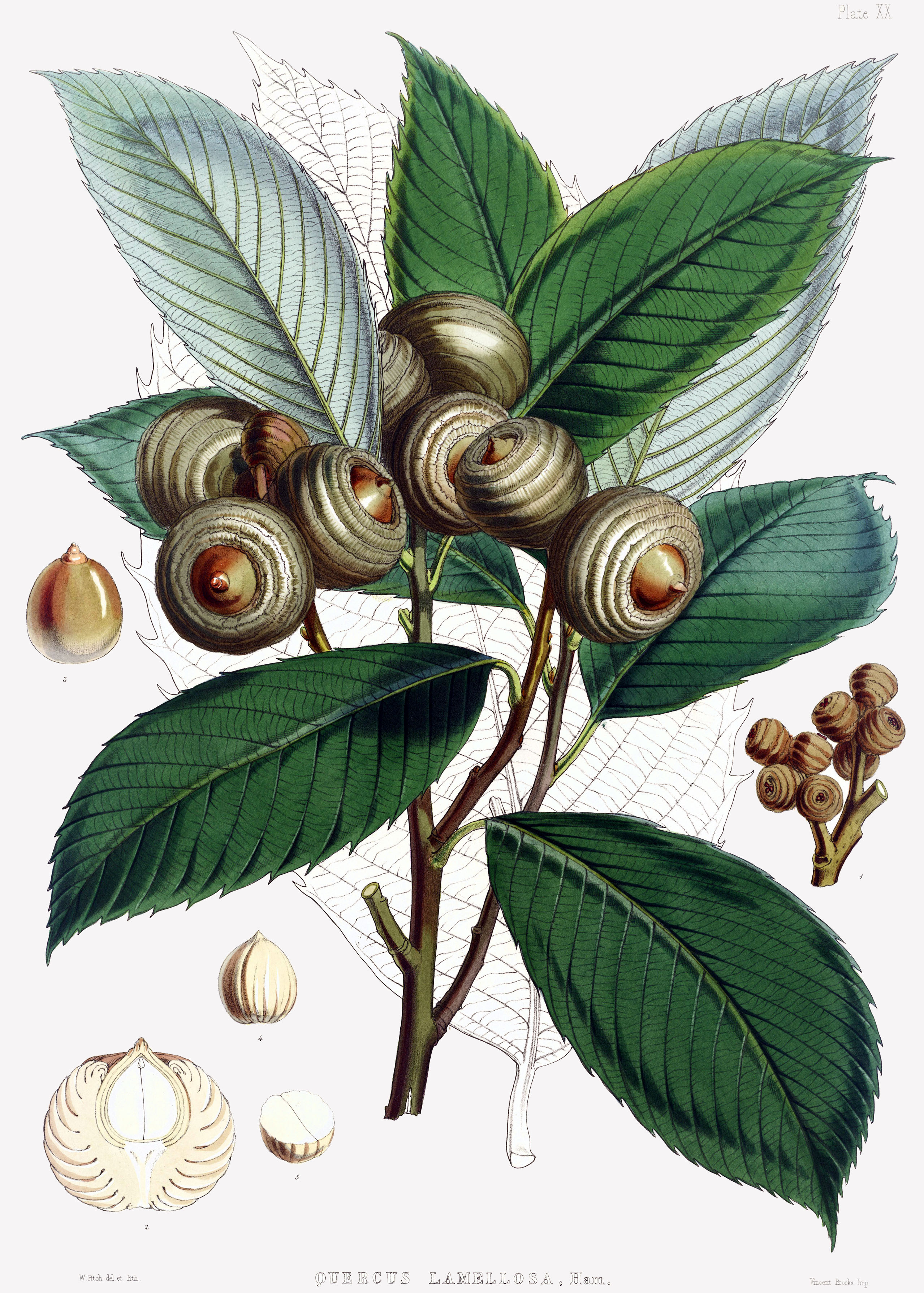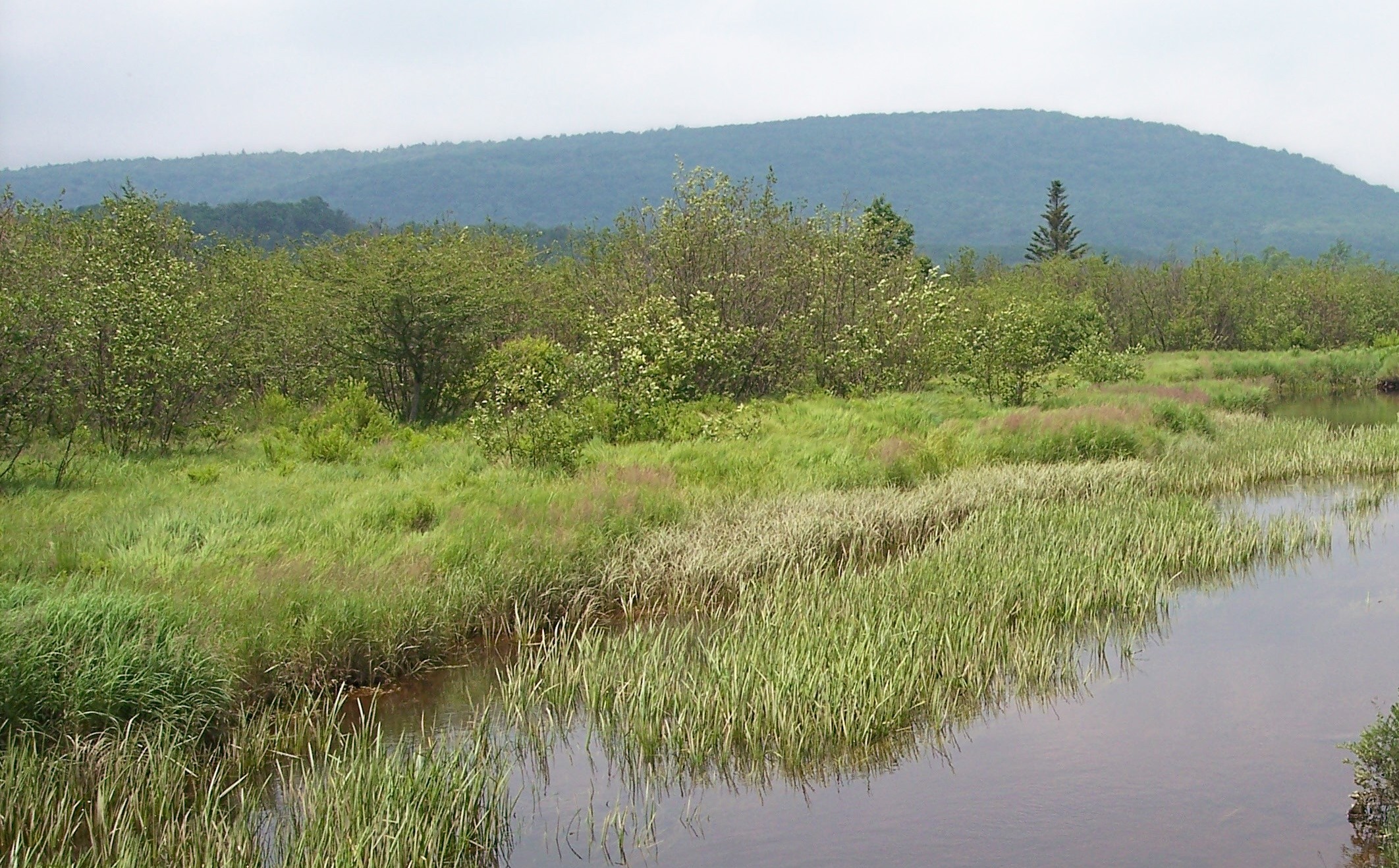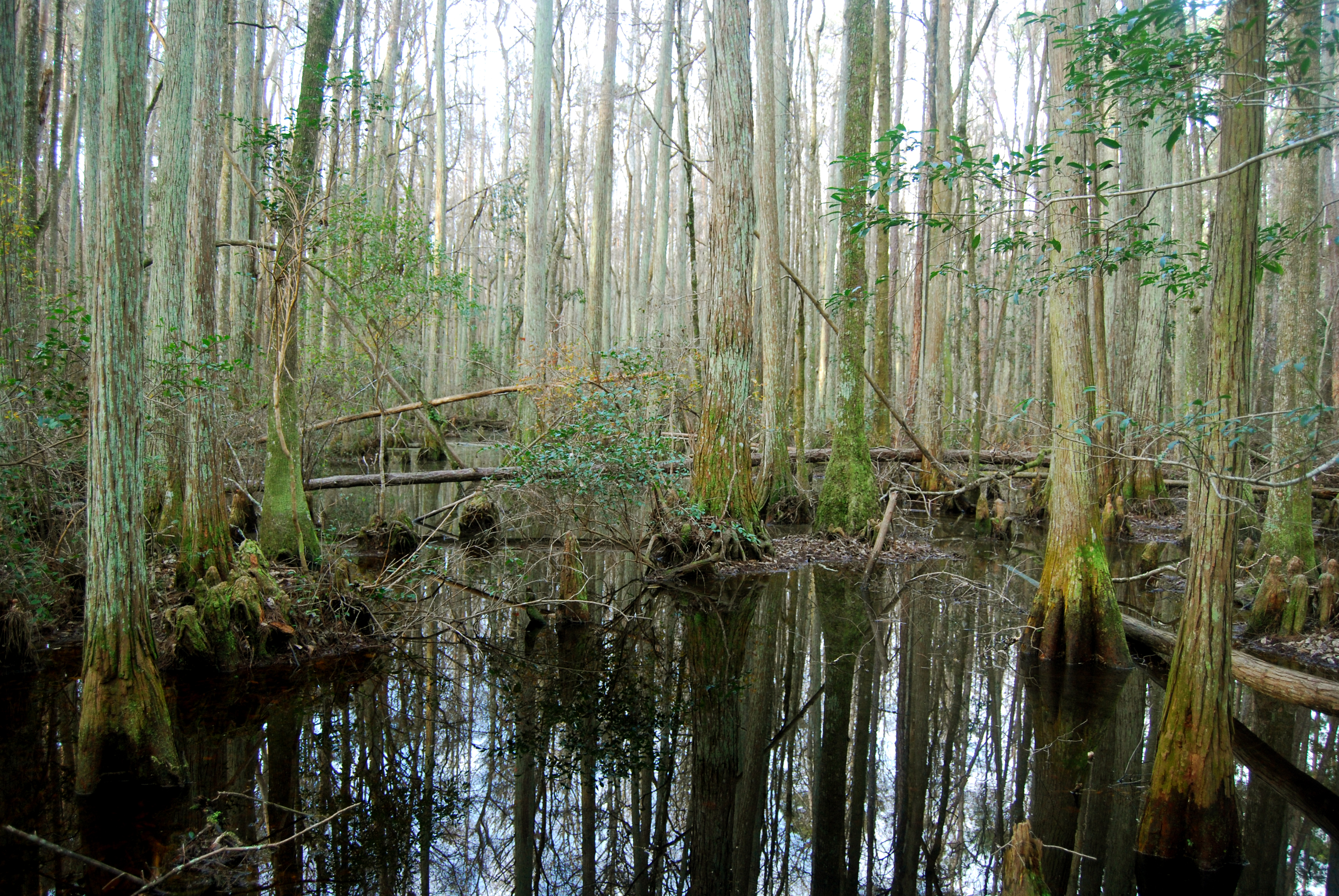|
Tenmile Run (Susquehanna River)
Tenmile Run (also known as Ten Mile Run or Ten-mile Run) is a tributary of the Susquehanna River in eastern Columbia County, Pennsylvania, in the United States. It is long and is entirely in Mifflin Township. The stream's watershed has an area of 8.24 square miles. The first settlers in the area arrived in the late 1700s and a number of mills have been built on the stream. It is designated as a High-Quality Coldwater Fishery and as Class A Wild Trout Waters. Course Tenmile Run begins in southern Mifflin Township, just north of Nescopeck Mountain. The stream flows west-southwest for several miles in a fairly shallow and narrow valley. It then turns north and enters a much broader valley. Over the next few miles, the stream moves from the eastern edge of the valley to the western edge of the valley, where it crosses Pennsylvania Route 339 and turns west, skirting a hill. After a short distance, it turns north and shortly afterwards enters the Susquehanna River. Tenmile Run joins t ... [...More Info...] [...Related Items...] OR: [Wikipedia] [Google] [Baidu] |
Susquehanna River
The Susquehanna River (; Lenape: Siskëwahane) is a major river located in the Mid-Atlantic region of the United States, overlapping between the lower Northeast and the Upland South. At long, it is the longest river on the East Coast of the United States. By watershed area, it is the 16th-largest river in the United States,Susquehanna River Trail Pennsylvania Fish and Boat Commission, accessed March 25, 2010.Susquehanna River , Green Works Radio, accessed March 25, 2010. and also the longest river in ... [...More Info...] [...Related Items...] OR: [Wikipedia] [Google] [Baidu] |
Catawissa, Pennsylvania
Catawissa is a borough in Columbia County, Pennsylvania. It is part of Northeastern Pennsylvania. The population was 1,539 at the 2020 census. It is part of the Bloomsburg– Berwick Metropolitan Statistical Area. Catawissa is twinned with Uxbridge, Ontario. The historic link began in 1805, when the Uxbridge area was granted by the British crown to Dr. Christopher Beswick, first medical doctor north of the Oak Ridges Moraine. While not a Quaker, he lived in Catawissa before moving to the Uxbridge area. Beswick Lane in the Ontario town is named after him. History The area where Catawissa now is was originally owned by William Henry in 1769. Catawissa was laid out in 1787. At this time it was referred to as "Hughesburg" or "Catawissey". The town's lots were distributed by lottery. When boats began to commonly travel along the Susquehanna River, Catawissa became locally important. Talk of a school in Catawissa began in 1796, and one was built there in 1800. The Catawissa Fire ... [...More Info...] [...Related Items...] OR: [Wikipedia] [Google] [Baidu] |
Fraxinus Americana
''Fraxinus americana'', the white ash or American ash, is a species of '' ash tree'' native to eastern and central North America. The species is native to mesophytic hardwood forests from Nova Scotia west to Minnesota, south to northern Florida, and southwest to eastern Texas. Isolated populations have also been found in western Texas Texas (, ; Spanish language, Spanish: ''Texas'', ''Tejas'') is a state in the South Central United States, South Central region of the United States. At 268,596 square miles (695,662 km2), and with more than 29.1 million residents in 2 ..., Wyoming, and Colorado, and the species is reportedly naturalized in Hawaii. There are an estimated 8 billion ash trees in the United States – the majority being the white ash trees and the Fraxinus pennsylvanica, green ash trees. Characteristics The name white ash derives from the glaucous undersides of the leaves. It is similar in appearance to the green ash, making identification difficult. ... [...More Info...] [...Related Items...] OR: [Wikipedia] [Google] [Baidu] |
Red Oak
The genus Oak, ''Quercus'' contains about 500 species, some of which are listed here. The genus, as is the case with many List of the largest genera of flowering plants, large genera, is Taxonomic rank#Ranks in botany, divided into subgenus, subgenera and Section (botany), sections. Traditionally, the genus ''Quercus'' was divided into the two subgenera ''Cyclobalanopsis'', the ring-cupped oaks, and ''Quercus'', which included all the other sections. However, a comprehensive revision in 2017 identified different relationships. Now the genus is commonly divided into a subgenus ''Quercus'' and a sugenus ''Cerris'', with ''Cyclobalanopsis'' included in the latter. The sections of subgenus ''Quercus'' are mostly native to the New World, with the notable exception of the white oaks of sect. ''Quercus'' and the endemic Quercus pontica. In contrast, the sections of the subgenus ''Cerris'' are exclusively native to the Old World. Legend Species with evergreen foliage ("live oaks") are tagge ... [...More Info...] [...Related Items...] OR: [Wikipedia] [Google] [Baidu] |
Red Maple
''Acer rubrum'', the red maple, also known as swamp maple, water maple, or soft maple, is one of the most common and widespread deciduous trees of eastern and central North America. The U.S. Forest Service recognizes it as the most abundant native tree in eastern North America. The red maple ranges from southeastern Manitoba around the Lake of the Woods on the border with Ontario and Minnesota, east to Newfoundland, south to Florida, and southwest to East Texas. Many of its features, especially its leaves, are quite variable in form. At maturity, it often attains a height around . Its flowers, petioles, twigs, and seeds are all red to varying degrees. Among these features, however, it is best known for its brilliant deep scarlet foliage in autumn. Over most of its range, red maple is adaptable to a very wide range of site conditions, perhaps more so than any other tree in eastern North America. It can be found growing in swamps, on poor, dry soils, and almost anywhere in between. ... [...More Info...] [...Related Items...] OR: [Wikipedia] [Google] [Baidu] |
Chestnut Oak
''Quercus montana'', the chestnut oak, is a species of oak in the white oak group, ''Quercus'' sect. ''Quercus''. It is native to the eastern United States, where it is one of the most important ridgetop trees from southern Maine southwest to central Mississippi, with an outlying northwestern population in southern Michigan. It is also sometimes called rock oak because of its presence in montane and other rocky habitats. Description As a consequence of its dry habitat and ridgetop exposure, the chestnut oak is not usually a large tree, typically growing to tall; specimens growing in better conditions can grow up to tall. They tend to have a similar spread of . A 10-year-old sapling grown in full sun will stand about tall. This species is often an important canopy species in an oak-heath forest. It is readily identified by its massively-ridged dark gray-brown bark, the thickest of any eastern North American oak. The leaves are long and broad, shallowly lobed with 10– ... [...More Info...] [...Related Items...] OR: [Wikipedia] [Google] [Baidu] |
Shrub Swamp
Shrub swamps — also called scrub swamps or buttonbush swamps — are a type of freshwater wetland ecosystem occurring in areas too wet to become swamps (“true” or freshwater swamp forest), but too dry or too shallow to become marshes. They are often considered transitional (“mid-successional”) between wet meadows or fens and conifer or hardwood swamps. By some classifications, shrub swamps must have at least 50% shrub cover and less than 20% tree cover. Other definitions specify large shrubs with small trees less than in height. Creation of shrub swamps often follows a catastrophic event in a forested swamp (flood, cutting, fire, or windstorm). Another route of development is via drained meadows and fens which progress to shrub swamps as a transitional state to forested swamps. Development As a wet meadow matures it begins to fill in with vegetation and as this decomposes the soil thickens creating high spots (hummocks) above the water. Shrubs and small trees begin ... [...More Info...] [...Related Items...] OR: [Wikipedia] [Google] [Baidu] |
Tsuga
''Tsuga'' (, from Japanese (), the name of ''Tsuga sieboldii'') is a genus of conifers in the subfamily Abietoideae of Pinaceae, the pine family. The common name hemlock is derived from a perceived similarity in the smell of its crushed foliage to that of the unrelated plant poison hemlock. Unlike the latter, ''Tsuga'' species are not poisonous. The genus comprises eight to ten species (depending on the authority), with four species occurring in North America and four to six in eastern Asia. Description They are medium-sized to large evergreen trees, ranging from tall, with a conical to irregular crown, the latter occurring especially in some of the Asian species. The leading shoots generally droop. The bark is scaly and commonly deeply furrowed, with the colour ranging from grey to brown. The branches stem horizontally from the trunk and are usually arranged in flattened sprays that bend downward towards their tips. Short spur shoots, which are present in many gymnosperms ... [...More Info...] [...Related Items...] OR: [Wikipedia] [Google] [Baidu] |
Hardwood
Hardwood is wood from dicot trees. These are usually found in broad-leaved temperate and tropical forests. In temperate and boreal latitudes they are mostly deciduous, but in tropics and subtropics mostly evergreen. Hardwood (which comes from angiosperm trees) contrasts with softwood (which is from gymnosperm trees). Characteristics Hardwoods are produced by angiosperm trees that reproduce by flowers, and have broad leaves. Many species are deciduous. Those of temperate regions lose their leaves every autumn as temperatures fall and are dormant in the winter, but those of tropical regions may shed their leaves in response to seasonal or sporadic periods of drought. Hardwood from deciduous species, such as oak, normally shows annual growth rings, but these may be absent in some tropical hardwoods. Hardwoods have a more complex structure than softwoods and are often much slower growing as a result. The dominant feature separating "hardwoods" from softwoods is the presence o ... [...More Info...] [...Related Items...] OR: [Wikipedia] [Google] [Baidu] |
Palustrine
Palustrine wetlands include any inland wetland that contains ocean-derived salts in concentrations of less than 0.5 parts per thousand, and is non-tidal. The word ''palustrine'' comes from the Latin word ''palus'' or marsh. Wetlands within this category include inland marshes and swamps as well as bogs, fens, pocosins, tundra and floodplains. According to the Cowardin classification system Palustrine wetlands can also be considered the area on the side of a river or a lake, as long as they are covered by vegetation such as trees, shrubs, and emergent plants. Classification Palustrine wetlands are one of five systems of wetlands within the Cowardin classification system. This system was created by Lewis Cowardin and others from the United States Fish and Wildlife Service in 1987. The other systems are: * Marine wetlands, exposed to the open ocean * Estuarine wetlands, partially enclosed by land and containing a mix of fresh and salt water * Riverine wetlands, associated wi ... [...More Info...] [...Related Items...] OR: [Wikipedia] [Google] [Baidu] |
Pennsylvania Department Of Environmental Protection
The Pennsylvania Department of Environmental Protection (DEP) is the agency in the U.S. state of Pennsylvania responsible for protecting and preserving the land, air, water, and public health through enforcement of the state's environmental laws. It was created by Act 18 of 1995, which split the Department of Environmental Resources into the Department of Environmental Protection and the Department of Conservation and Natural Resources. Its current acting secretary is Ramez Ziadeh. The Department of Environmental Resources was created by Act 275 of 1970, which abolished the Department of Forest and Waters. The Department of Forest and Waters was created by the General Assembly in 1901. The Department of Environmental Protection is charged with the responsibility for development of a balanced ecological system incorporating social, cultural, and economic needs of the commonwealth through development and protection. The department is responsible for the state's land, air, and water ... [...More Info...] [...Related Items...] OR: [Wikipedia] [Google] [Baidu] |
Brown Trout
The brown trout (''Salmo trutta'') is a European species of salmonid fish that has been widely introduced into suitable environments globally. It includes purely freshwater populations, referred to as the riverine ecotype, ''Salmo trutta'' morpha ''fario'', a lacustrine ecotype, ''S. trutta'' morpha ''lacustris'', also called the lake trout, and anadromous forms known as the sea trout, ''S. trutta'' morpha ''trutta''. The latter migrates to the oceans for much of its life and returns to fresh water only to spawn. Sea trout in Ireland and Britain have many regional names: sewin in Wales, finnock in Scotland, peal in the West Country, mort in North West England, and white trout in Ireland. The lacustrine morph of brown trout is most usually potamodromous, migrating from lakes into rivers or streams to spawn, although evidence indicates some stocks spawn on wind-swept shorelines of lakes. ''S. trutta'' morpha ''fario'' forms stream-resident populations, typically in alpine stre ... [...More Info...] [...Related Items...] OR: [Wikipedia] [Google] [Baidu] |

.jpg)






